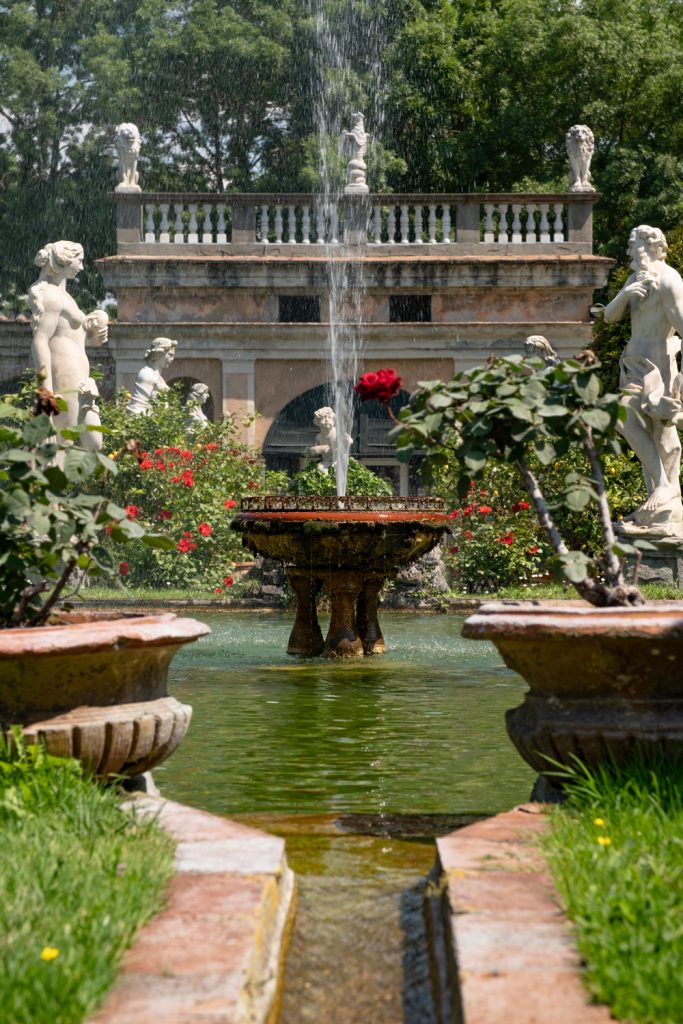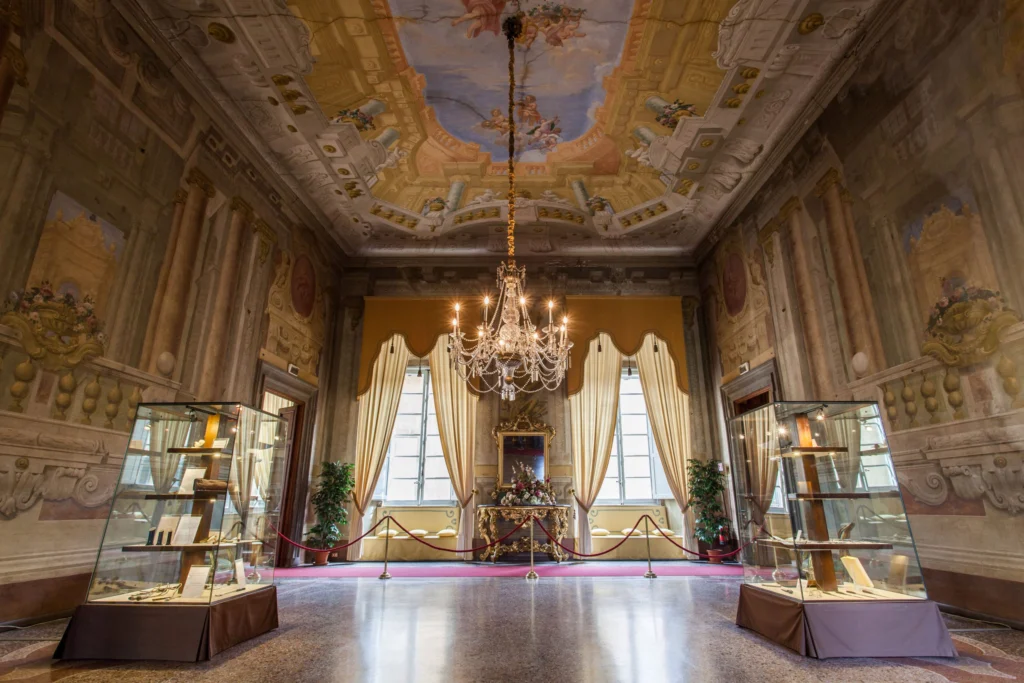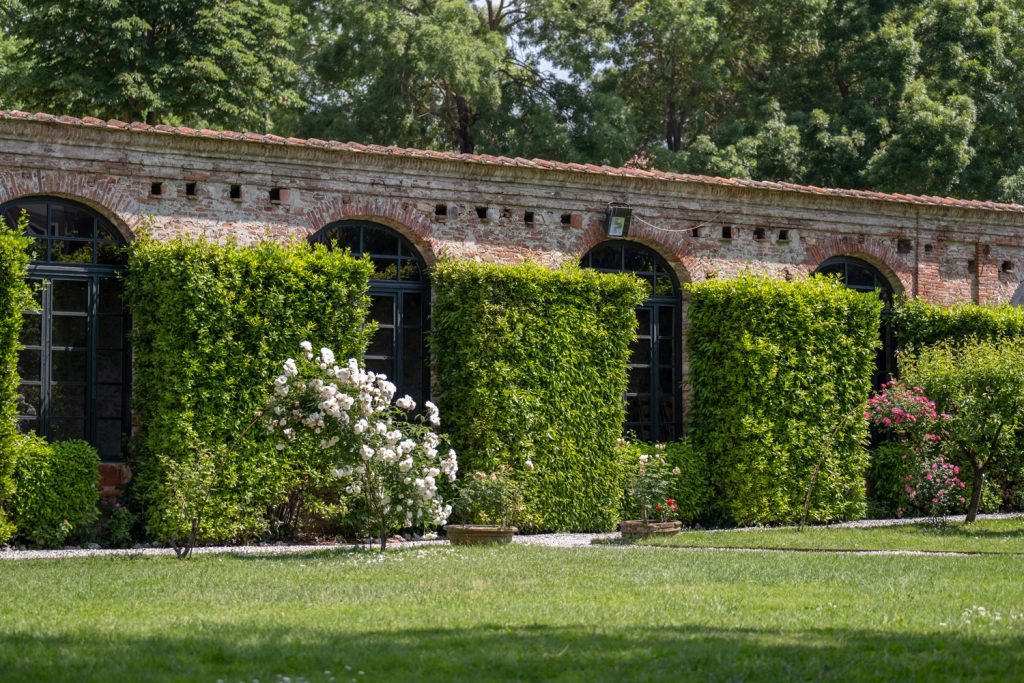
AUDIO
With its scenic central jet, the octagonal fountain stands at the intersection of the garden’s two perpendicular axes, midway between the lemon house and the Palace façade. Positioned at the heart of the formal garden and aligned with the row of statues and lemon pots that lead from the Palace to the lemon house entrance, the fountain creates an oasis of peace and freshness, surrounded by flowers growing along its edges and four mythologically inspired statues, described as being “of no common chisel,” reflected in its waters.
Facing the central body of the Palace, a marble cherub emerges from one of the fountain’s sides, standing on a rock formation, from which four jets of water once flowed. The cherub once held a scroll inscribed with the Latin phrase:
“Irae vi non gignit neque gignit vae vivum”.
According to historical records and period floorplans, the fountain was added in the early 19th century, replacing a two-storey building, “exquisite in architecture and adorned with sculpted marble,” that had housed a collateral branch of the Controni family.
Felix Pfanner, recalling his youth on the shores of Lake Constance, would often row a small boat across the fountain in summer, and skate across its frozen surface during the harsh winter months.





